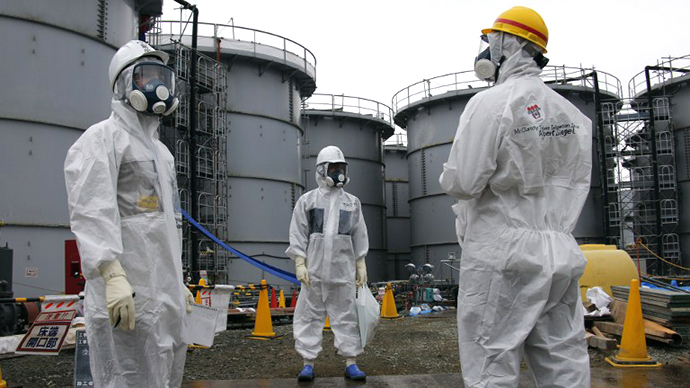THE ASAHI SHIMBUN
Tokyo Electric Power Co. corrected its radioactivity readings for groundwater from a well at the crippled Fukushima No. 1 nuclear plant to a record-high 5 million becquerels of strontium per liter.TEPCO officials said the strontium levels were gauged again because the previous data was wrong. They also said radioactivity readings for water taken from other wells before September were also likely erroneous.
The company had said 900,000 becquerels of beta-ray sources, including strontium, were detected in water taken on July 5, 2013, from the observation well near a water intake for the No. 2 reactor turbine building.
Read More Here
.....
Fukushima radiation levels underestimated by five times - TEPCO
Published time: February 08, 2014 07:03

Strontium-90 is a radioactive isotope of strontium produced by nuclear fission with a half-life of 28.8 years. The legal standard for strontium emissions is 30 becquerels per liter. Exposure to strontium-90 can cause bone cancer, cancer of nearby tissues, and leukemia.
Tokyo Electric Power Co. originally said that the said 900,000 becquerels of beta-ray sources per liter, including strontium - were measured in the water sampled on July 5 last year.
However, the company noted on Friday that the previous radioactivity levels had been wrong, meaning that it was also likely reading taken from the other wells at the disaster-struck plant prior to September were also likely to have been inaccurate, the Asahi Shimbum newspaper reported.
The Japanese company has already apologized for the failures, which they said were a result of the malfunctioning of measuring equipment.
TEPCO did not mention the radioactivity levels of other samples of both groundwater and seawater taken from between June and November last year – which totaled some 140.
However, the erroneous readings only pertain to the radiation levels measured in water – readings taken to measure the radiation levels in air or soil are likely to have been accurate.
Read More Here
.....
















